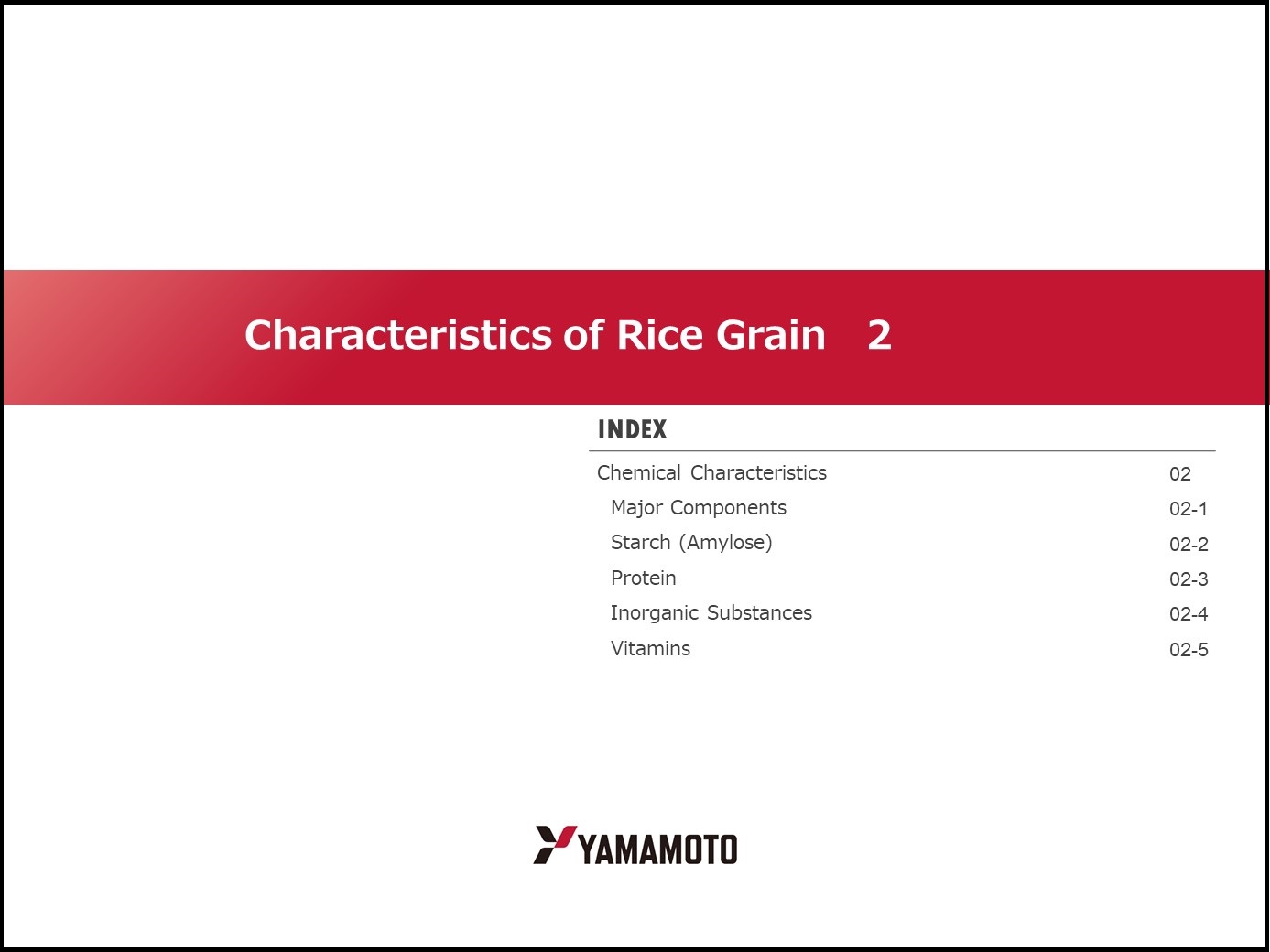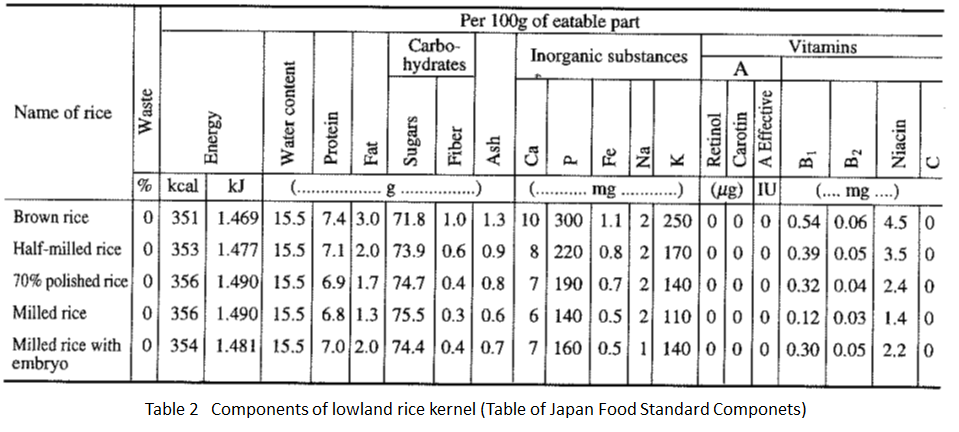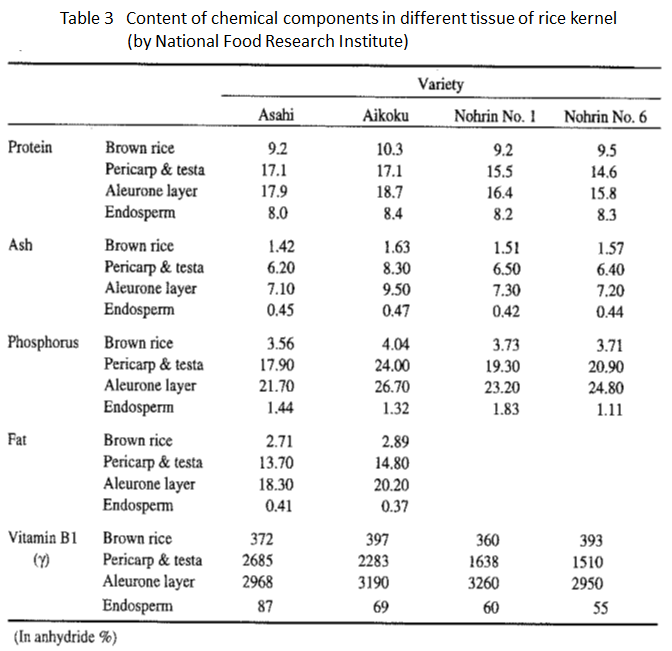9. Characteristics of Rice Grain 2
- INDEX -
Chemical Characteristics
Major Components
Starch (Amylose)
Protein
Inorganic Substances
Vitamins
Chemical Characteristics
Major Components
The major component of rice is carbohydrate (starch) accumulated in its endosperm cells. It also contains protein, fat, ash, and a small amount of vitamins (Table 2). These components other than carbohydrates are mainly contained in the embryo and external aleurone layer of the endosperm, and are bound to decrease when rice is milled. (Table 3). Carbohydrates, on the other hand, relatively increase , from 72% to 76%, by milling (Table 2).
Starch (Amylose)
Amylose and amylopectin:
Carbohydrate consists mainly of starch, presenting itself in granular form of 20 micrometers in diameter. Non-glutinous japonica rice produced in Japan consists of about 20% amylose (chain molecule) and 80% amylopectin (branching molecule), while glutinous rice contains only amylopectin. The molecular weight of amylopectin is 100 times larger than that of amylose, and amylopectin shows red iode starch reaction depending on the point of branching.
High amylose content:
When the temperature is high during ripening period, starch accumulation will become insufficient and reduce the percentage of amylose content. Indica varieties in general high a percentage of amylose (Table 4).; they are low in stickiness and not popular among Japanese people, but are said to be well-suited for piraf and the like. In Southeast Asian countries, long rice with a high content of amylose ? indica varieties ? is favored. Their coking method is called “Yutori method” (a cooking way to remove excess boiling water among rice kernels and then steam it), making dry, non-sticky rice , whereas the most common Japanese method, “Takiboshi method”, of cooking is to have rice kernels absorb boiling water almost completely.


